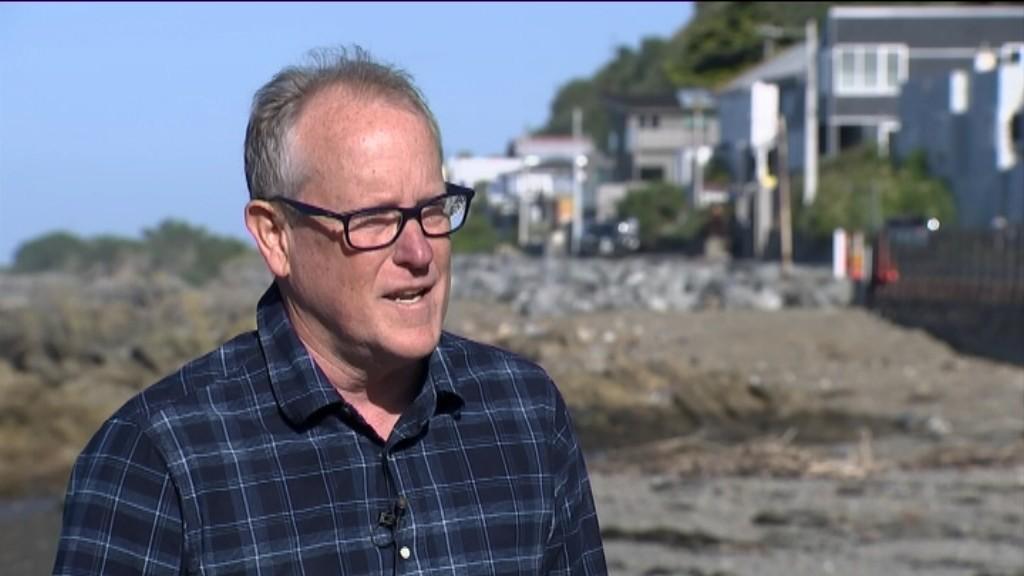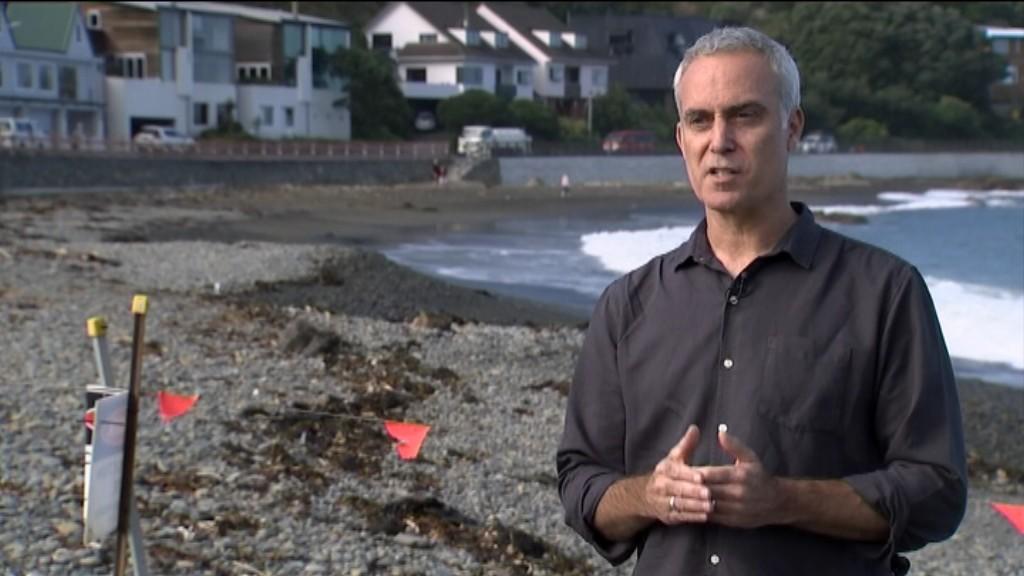New climate change research has pinpointed the places in New Zealand where sea level rise will greatly outpace the global prediction of 30cm by 2060 which is based on achieving the Paris climate agreement.
For parts of our two biggest cities, Auckland and Wellington, 30cm of sea level rise isn't 40-50 years away, but just 10-20. By 2060 it’s approaching a metre in some places.
That is because New Zealand sits on two tectonic plates and for many parts of the country 30cm is coming in only 10 to 20 years.
By 2060, it's approaching a metre and that will cause dramatic inundation, untold damage and ultimately force people to abandon their homes and businesses and retreat from the coast.
The study's lead scientists, Richard Levy and Tim Naish, have created a website so precise people can find out how their own neighbourhood will be affected, which will surely put the issue in the front of people's minds where it deserves to be.
The website where people can find out how their own neighbourhood will be affected will be revealed on AM at 7:20am on Monday.
Owhiro Bay in Wellington is one of the thousands of locations around New Zealand that today have new sea-level rise predictions to come to terms with and the magnitude has stunned even the scientists working on them.
"I was shocked. I mean I knew it was bad, I knew we were getting sea level rise, we know that, I've been a climate scientist for 20 years, but I was shocked at how quickly it can happen," Naish told Newshub.
"As we were going through it the surprises just kept coming," Levy added.
While Kiwis have all been getting on with their busy daily lives, the changes have been occurring and in climate change terms, it's happening at light-speed.
"Like most people, I thought we had more time. We don't, we literally have a decade or two before in places like this we're gonna be at decision points about whether you look at some sort of managed retreat," Naish told Newshub.
So who's in the firing line?
Auckland's Britomart will flood. The north-western motorway, Tamaki Drive, Napier's brand new airport, Nelson's airport while Christchurch and Dunedin have big problems too.
Levy and Naish have spent the last five years working on this groundbreaking new sea-level rise study, with work that began in Antarctica.
They've drilled sediment and ice cores to look millions of years back into the past, painstakingly reconstructing a precise climate record to inform their future projections. It's the cutting edge of climate research.
The whole world has been using one sea-level rise prediction - 30cm by 2060 if we limit warming to 2C - and New Zealand has used it too.
But there's one big factor that until today hasn't been included in the calculations, vertical land movement.
We know New Zealand has a dynamic coastline - it can move up and down in a dramatic way, just like we saw with the Kaikoura earthquake. But there are also constant tiny movements, just millimetres a year.
It might not sound like much but when you add any sinking to global sea-level rise it makes a massive difference.
That's why some places in New Zealand will experience two or three times the global average of the sea level rises and we didn't know that until today.
"When you weave that in with the ice sheets melting, the glaciers melting and the global oceans rising - in some places it happens twice as fast," Naish said.
"We get twice as much sea-level rise than we expected so it's a big deal."

In areas where land is subsiding - such as Auckland and Wellington - town planners no longer have 40 or 50 years to deal with this.
In just 10 or 20 years many homes, roads and rail lines will need to be raised, protected with sea walls or abandoned.
"Auckland was a big shock to us," Levy said.
"The region as a whole is subsiding at a reasonably high rate."
The scientists wanted all Kiwis to have access to this information, so they built a website with one coloured dot for every 2km of the coastline.
And with the new predictions for New Zealand, there are now 7434 blue dots to show.
"It's one of those things where people think 'oh it's not gonna affect me, I don't have to worry about it' but the information we've produced is really making it clear that you do need to be concerned, you do need to pay attention," Levy said.
Climate Change Minister James Shaw is paying attention.
"I used some very unparliamentary language when I saw the maps," Shaw said.
There have been a lot of moments over the last 30 years where scientists and climate activists have thought this is the moment that people will sit up and pay attention and do something about this and those moments have passed us by.
So what does sea level rise actually look like?
In Ōwhiro Bay, 30cm is only 20 years away and it's on the frontline of climate change in New Zealand.
"What that means is the 100-year coastal big storm surge, big coastal flood, those events will become an annual event," Naish told Newshub.
"They will be happening every year. This place [Ōwhiro Bay] will be in serious trouble."
The Ōwhiro Bay's residents know what's coming for the rest of New Zealand and they're already feeling the impact.
"You really get a sense of the power of the sea and it can pop into your home and say hello," Ōwhiro Bay resident Eugene Doyle told Newshub.
Those mountain-like waves have forced them into action, lobbying their local council to build bigger sea walls and install early warning systems.

But that won't work forever with what's coming and they know it.
"People have got to put their foot on the pedal," Doyle said.
"We respect the science, we believe in the science, now get on and start developing those adaptation plans, start drilling down bay by bay, community by community to get the best strategies in place and then actually start spending money sorting it out to the degree that is reasonable."
"I do think that decision-makers will start to act on that because they're gonna have to," Shaw added.
Levy and Naish are already speaking to many councils, the finance and insurance sectors and now they want all of us to hear them too.
"Instead of putting your head in the sand - you just don't have time," Naish said.
"In some places 10 years is all we have. So if the head goes in the sand and you knew then it's sort of on you, isn't it?"
This is a red alert, a siren blaring at the loudest it can go.
Watch the full story above.



